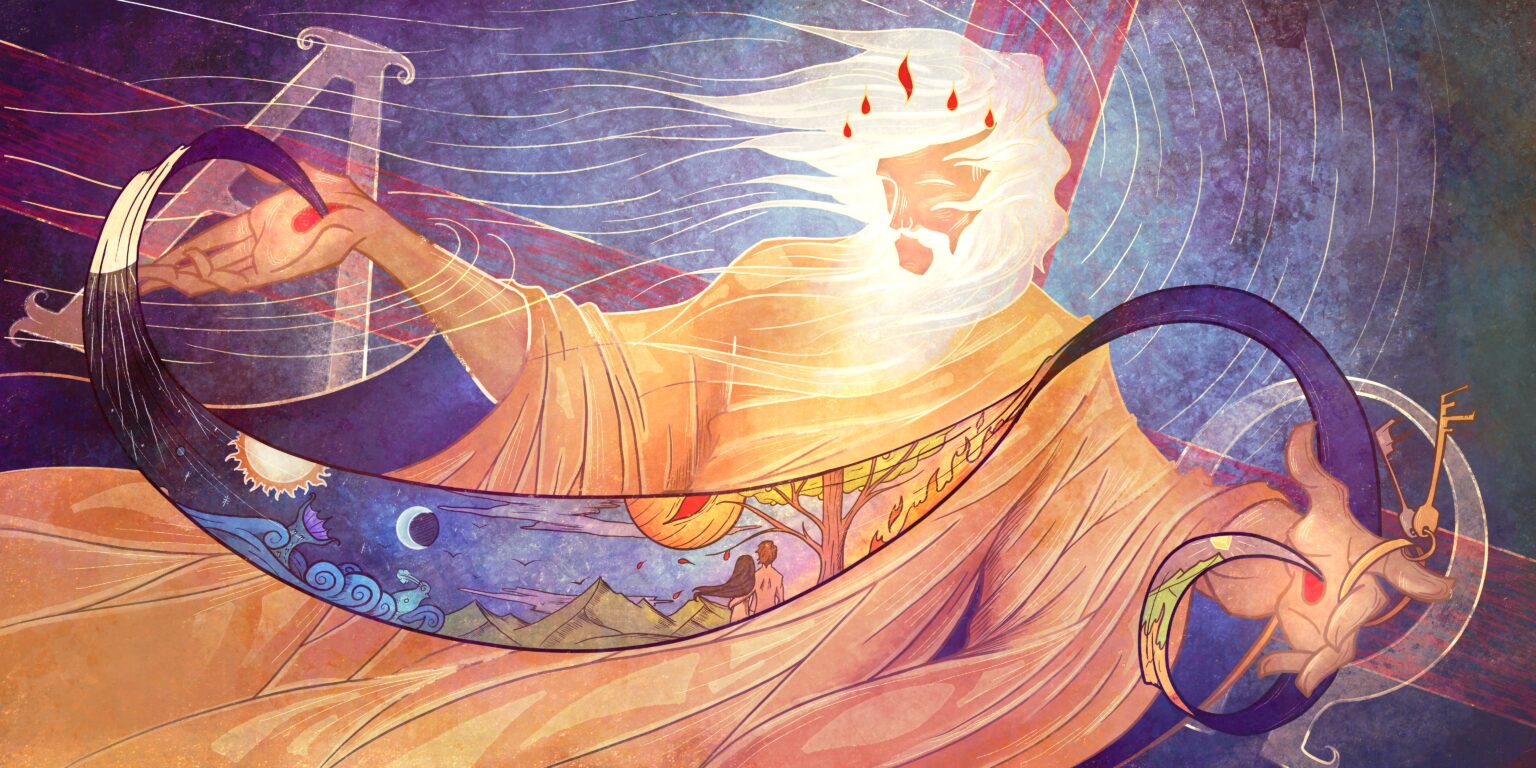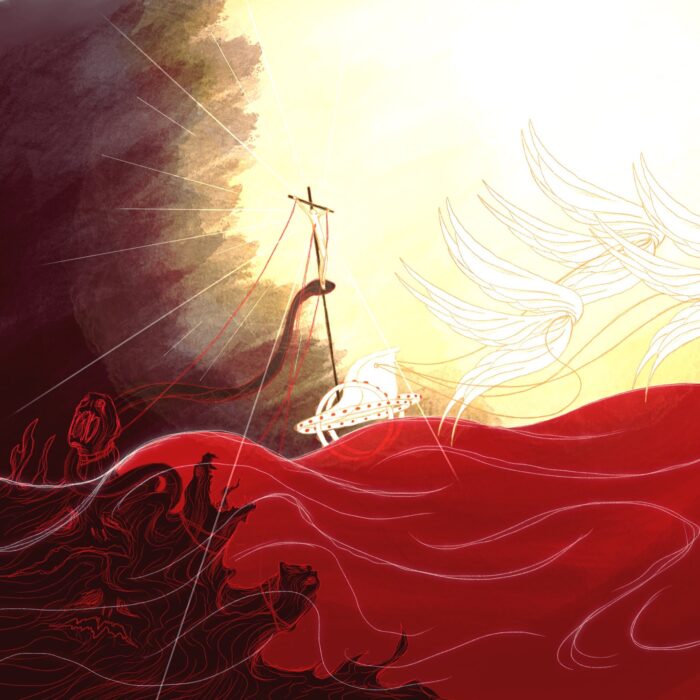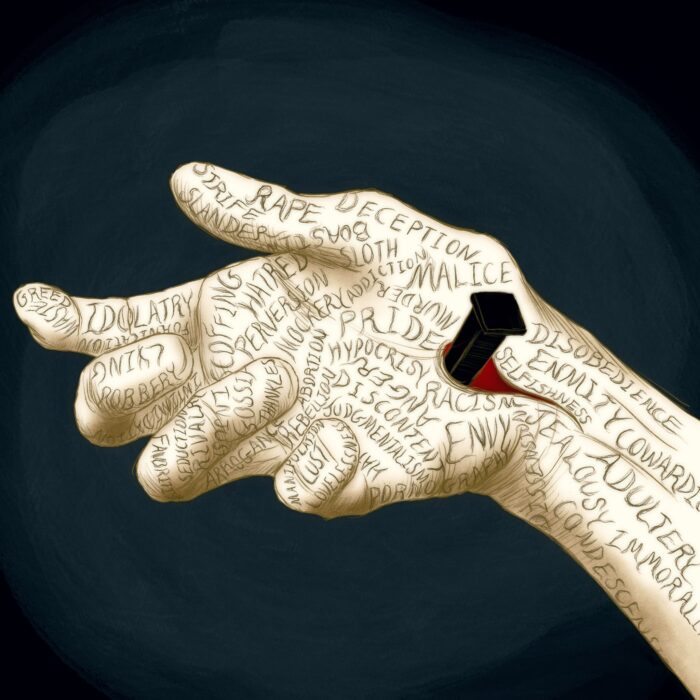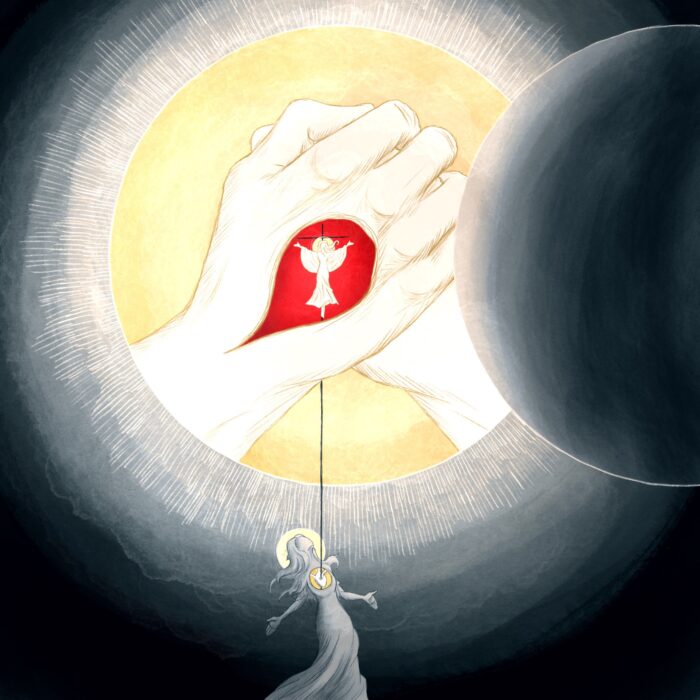Colossians 1:15, ‘He is the image of the invisible God, the Firstborn of all creation, for by Him, all things were created…’
This is the artwork from the first two pages of a planned board-book based on Colossians 1:15-20. I’ve recited these verses over our son almost every night of his life as a way of building the identity of the slain and risen Jesus into the deep-level structures of his mind, and I thought others might desire to send their little ones off to sleep with these truths as well. My artwork does not necessarily lend itself to board books…but, I figure that—even for the smallest children—something of the truth will work its way through the images via imaginative osmosis. At least, that’s the hope.
The ‘He’ referred to in Colossians 1:15 is the One in whom we have redemption (1:14), that is to say, the crucified and risen Jesus (cf. Eph.1:7). Thus, everything from v.15-20 refers not ‘merely’ to the eternal Word or preincarnate Son, but specifically to the *Crucified One who is Risen.* It is not an unknown and undefined ‘eternal Son,’ to whom these words refer, but the the One revealed in the flesh, declared in the blood, and articulated upon the resurrection-illumined cross of His Passion.
For this reason, I’ve pictured Jesus as the ‘image of the invisible God,’ precisely as the revealed at the cross (as alluded to by the red cruciform rays extending from the center of the image…the five wounds arranged as a crown over His head picture the transfiguration of sorrow to joy and suffering to glory achieved by the resurrection).
This Jesus is eternally the image of God; His identity as the anastasiform (i.e., slain-and-risen) revelation of the invisible Father does not begin with the spatio-temporal incarnation, but extends to, embraces, and defines all time, thus His two pierced hands are represented at the Beginning (Alpha) and End (Omega) of creation.
Finally, Jesus’ identity as the ‘Firstborn’ of all creation is defined in the next stanza of the verse, namely, that He is the one *by* whom all things were created. ‘Firstborn,’ then, points not to his status as first created thing, but as ruler over all created things. Shockingly, Paul’s flow of thought demands we understand *the slain and risen one* to be the creator of all things (our one-track-bound perception of time ceases to be relevant when dealing with the One who is Himself Beginning and End and whose temporal sacrifice takes place within the eternal Spirit, Heb.9:14). I’ve attempted to picture this by showing the whole of spatial-temporal creation flowing from the wounded hands of the anastasiform Christ.




